Sony VAIO S Series: All Day Consumer Computing
by Dustin Sklavos on September 9, 2011 12:00 AM EST- Posted in
- Laptops
- AMD
- Intel
- Sony
- Sandy Bridge
- 6000M
- VAIO S
- Switchable Graphics
Application and Futuremark Performance
It should go without saying that the Sony VAIO S' performance in PCMark is going to be less than impressive. Not only does it not have an SSD, but the hard drive is (as I've belabored) punishingly slow. Thankfully, the Futuremark benches don't seem to be indicative of how well the VAIO S can perform in real world applications (outside of those that hit the storage subsystem), as you'll soon see.
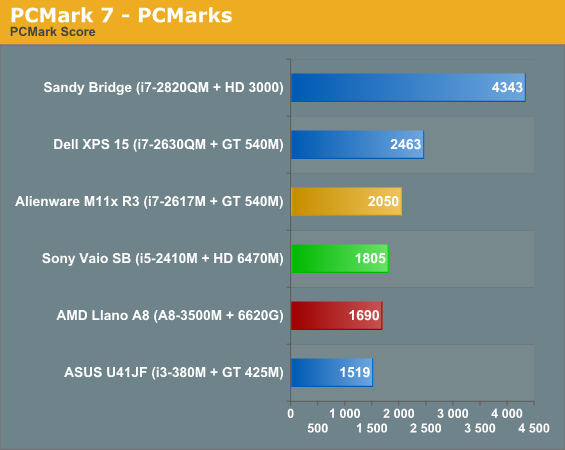
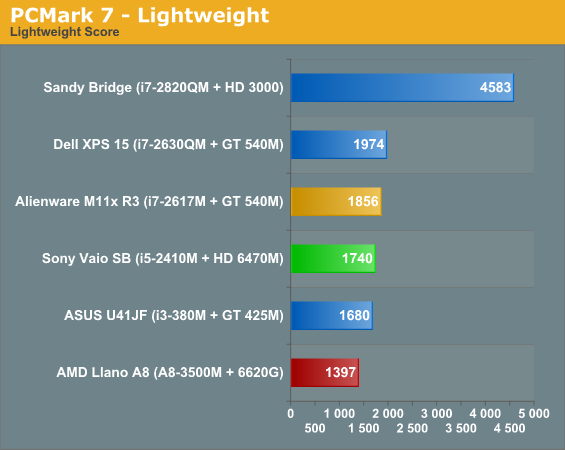
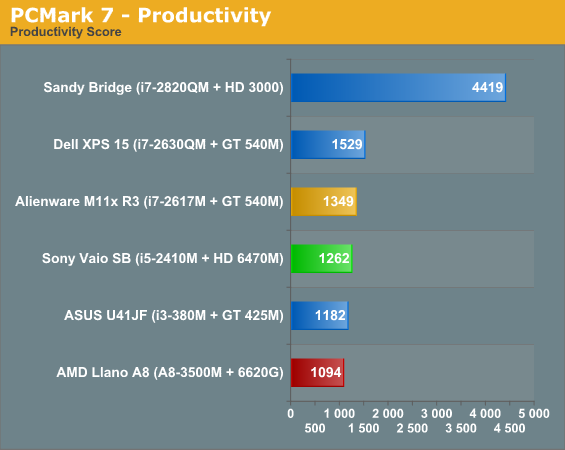
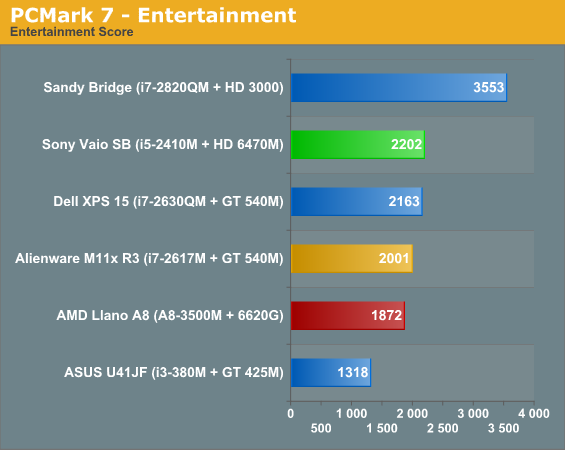

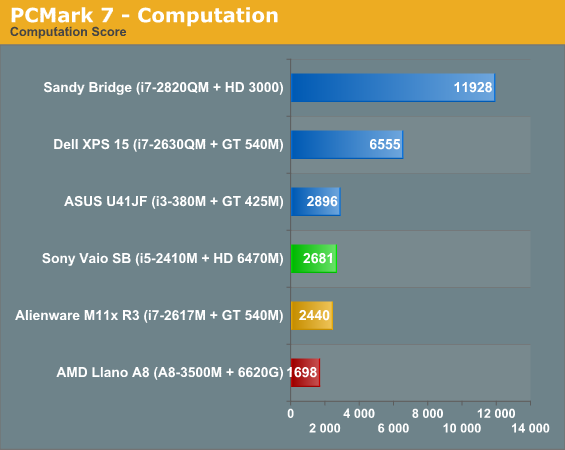
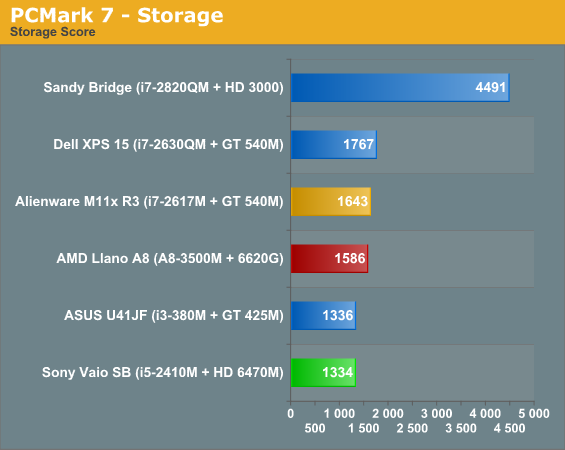
Once you get to the storage subscore (where our SSD-equipped Sandy Bridge reference platform excels), you can see just how bad things are with the VAIO S' 5400RPM drive. Now you understand what I mean when I tell you that when you order the notebook, get at least a 7200RPM hard drive upgrade—or plan on doing an SSD upgrade on your own.
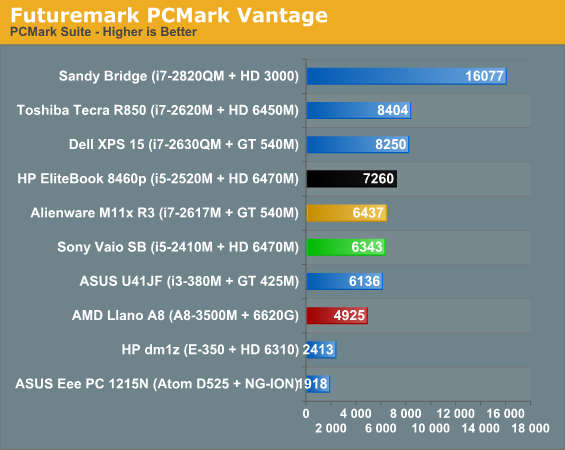
Under PCMark Vantage the VAIO S fares at least a little better. You'll notice I've included benchmarks for Atom and the E-350 in this chart and others; when we get to the battery life testing you'll see why. It's true those platforms cost at least a third as much as the VAIO S, but the VAIO S itself can still be had for under a grand, and there are some very good arguments to be made for going that route.
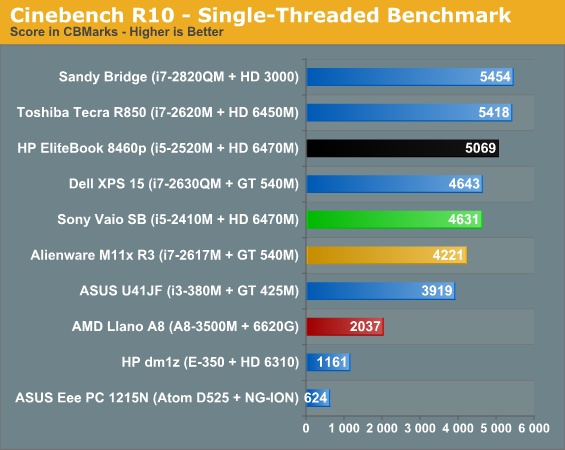

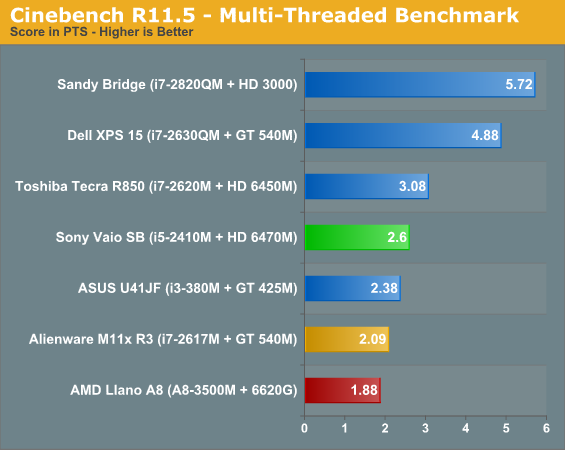
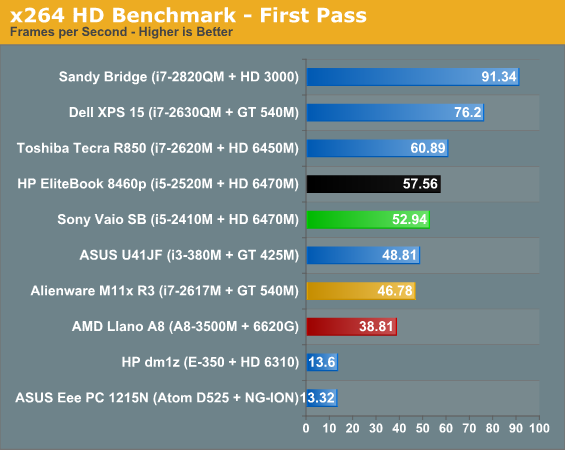
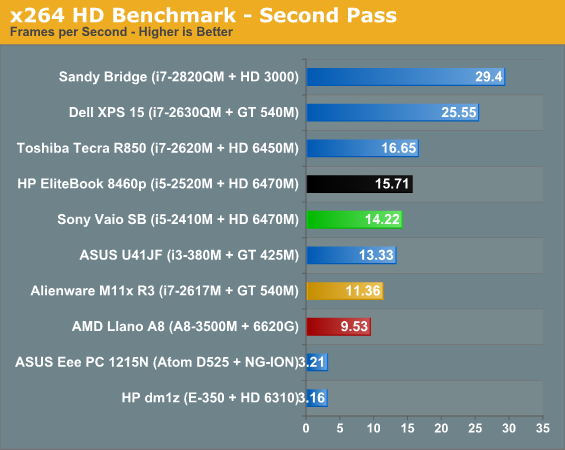
Into our proper application tests, the VAIO S starts to hit its stride. The Core i5-2410M at its heart may be Intel's slowest Sandy Bridge i5, but it's still a Sandy Bridge i5 and the scores reflect that. Performance is right where we want it to be, and the single memory channel in our review unit doesn't seem to hamper it too badly.
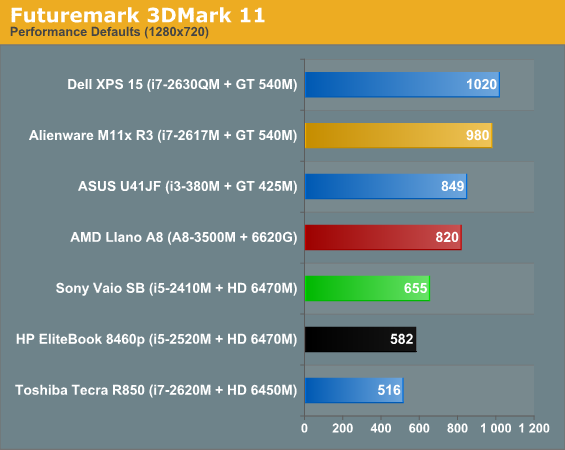
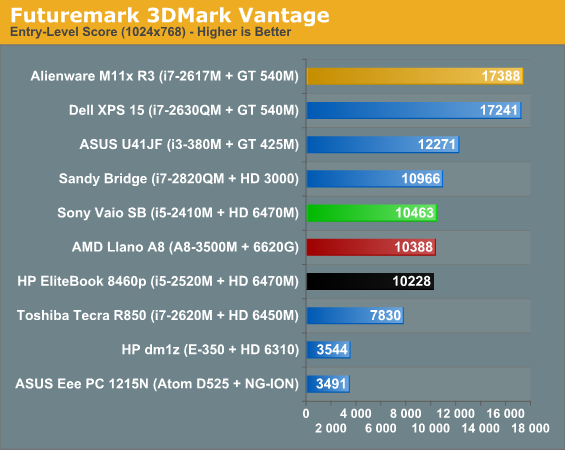
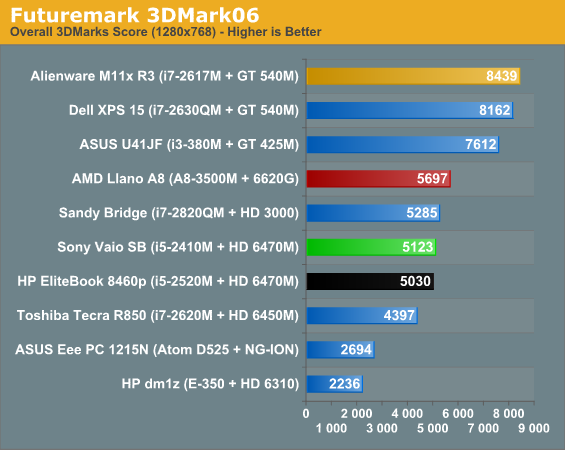
Back with Futuremark, the 3DMarks seem less kind to the VAIO S again, but this time they have it coming in behind Intel's HD 3000 integrated graphics hardware. This isn't wholly unexpected since the AMD Radeon HD 6470M is fairly anemic to begin with, but it's not really representative of real world performance either. End users might benefit more from Intel spending time optimizing for actual games instead of 3DMark.










70 Comments
View All Comments
jeremyshaw - Monday, September 12, 2011 - link
How about the Sony Z line, with 1920x1080 13.1" (not a typo) display? :pAlso, I want to note the the author: the HD6470m can simply download the latest AMD drivers, and install OVER the existing (must be installed) Sony driver set. Just make sure to download the large 80MB+ file from the second or third tab of the AMD driver website, and NOT the 1MB "downloader/launcher" file.
In addition... the HD6470m kicks the HD3000 solidly on it's rear, no questions asked. It's not "70%," as claimed in this article, due to other little things, like Intel's horrid texture butchering, and general driver quality in gaming.
broccauley - Monday, September 19, 2011 - link
I'd rather have all those extra pixels in a useful aspect ratio.Also, more pixels != always better, especially since software support for high DPIs isn't always great and I don't want the eye strain.
BOYCOTT 16:9. DEMAND 16:10.
joshu zh - Friday, September 9, 2011 - link
What makes 16:9 display bad is thw Windows - all toolbars/icons eating up the areas at the top and bottom of the screen. if these toolbars/icons can been relocated to either the left or right of the screen, 16:9 will not be too bad.Ushio01 - Friday, September 9, 2011 - link
Right click bottom toolbar and drag to either side of the screen.gochichi - Saturday, September 10, 2011 - link
That's an awesome suggestion! Thank you! I'll try it for a while, but my initial feeling is that it's awesome. (the hiding thing just doesn't ever work out well). This, this really could be awesome for us with the 16:9 (which i don't even hate to begin with).The true comparison laptop wise, is 16:9 versus a fewer inch laptop. Meaning, 12" 5:4 versus 13" 16:9 and in those cases the 16:9's win hands down.
For instance my VAIO 14" has the same footprint as my Macbook Air 13" ... and they feel similarly sized (other than the air is obviously lighter). You gotta realize that keyboards are long, always have been, so you get especially for smaller laptops, a more useful package with 16:9... hands down.
Flunk - Sunday, September 11, 2011 - link
This is really a good idea. I did this about a week after getting a new 1080p monitor and it really saves space and makes my desktop feel less cluttered too.deeyo - Monday, September 12, 2011 - link
yess i love the sidebar for my 1366x768 laptop. Especially when I have tons of windows open, it's organized really nicelyvery protective of my vertical space =P
cptcolo - Sunday, September 11, 2011 - link
I could not agree more Brad.The low resolution 16:9 displays on most laptops are not useful for productive work and I would never buy one. Manufactures have designed themselves out of the market.
I DO believe that laptop resolutions will increase. If people speak out enough against 16:9 some PC manufacture will ... think different. iPad 3 will make make these ultra portables look pretty silly side-by-side.
I own a Lenovo T410s w/160GB SSD. It is powerful enough and great enough to be my only computer. This Sony and frankly all the new Ultrabooks could not do that, primarily because of one thing, a terrible screen.
Thankfully we have the 13 inch 1440x900 16:10 (equivalent 16:9 size of 13.64 inches) MacBook Air, which can be made to run Windows 7 only. (http://www.zdnet.com/blog/perlow/windows-7-on-the-...
Rookierookie - Friday, September 9, 2011 - link
The 7200rpm HDD is a $20 upgrade, and it's definitely not optional. Heat and noise and durability concerns be damned.therealnickdanger - Friday, September 9, 2011 - link
Just put that $20 toward a quick SSD. Unless you need more than 120GB of space, you can get some awesome SSDs for under $200. Or you can just get a boot drive SSD (64GB and under) for under $80. Many high end SSDs are close to the magical $1/GB barrier now.